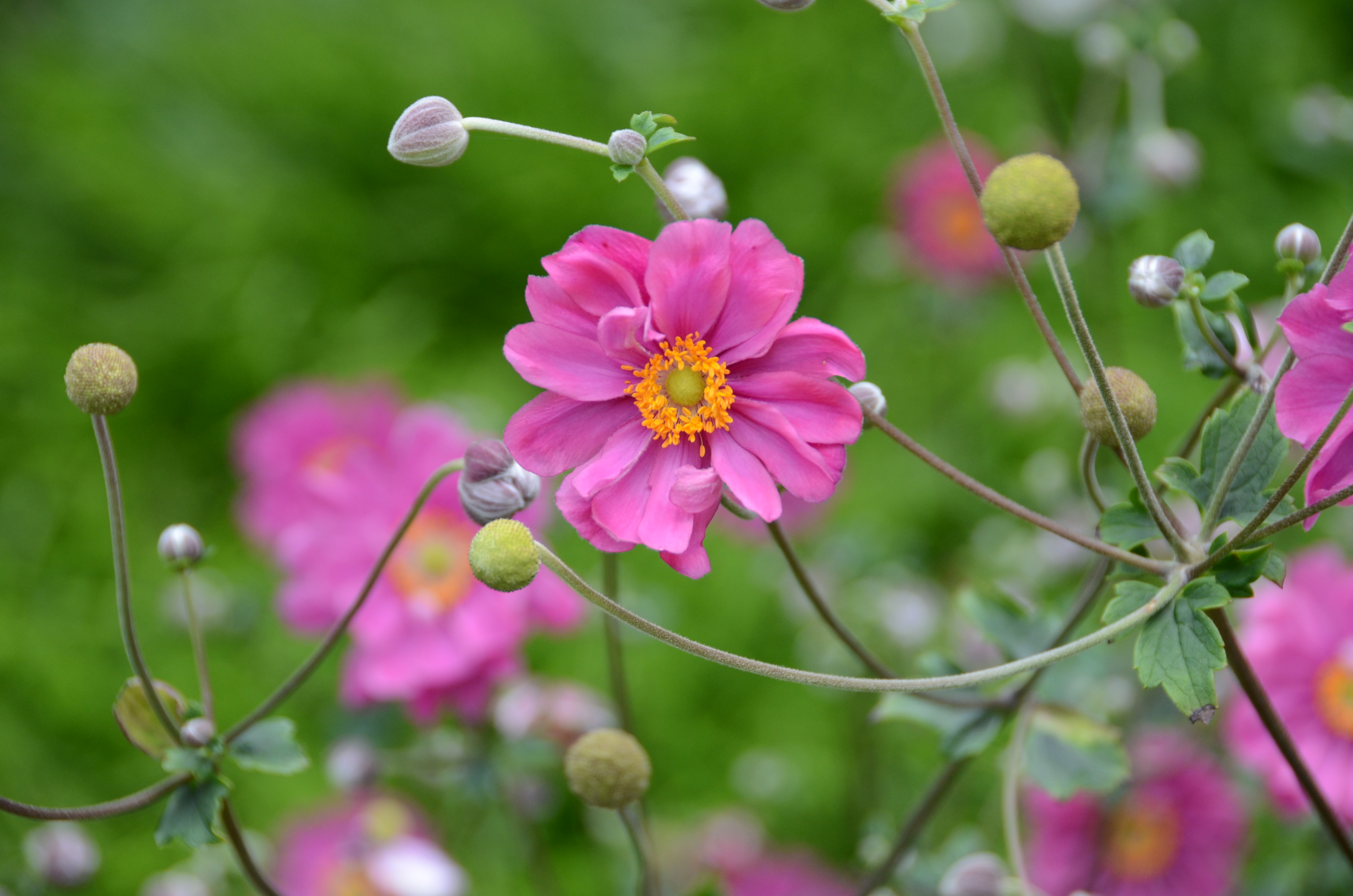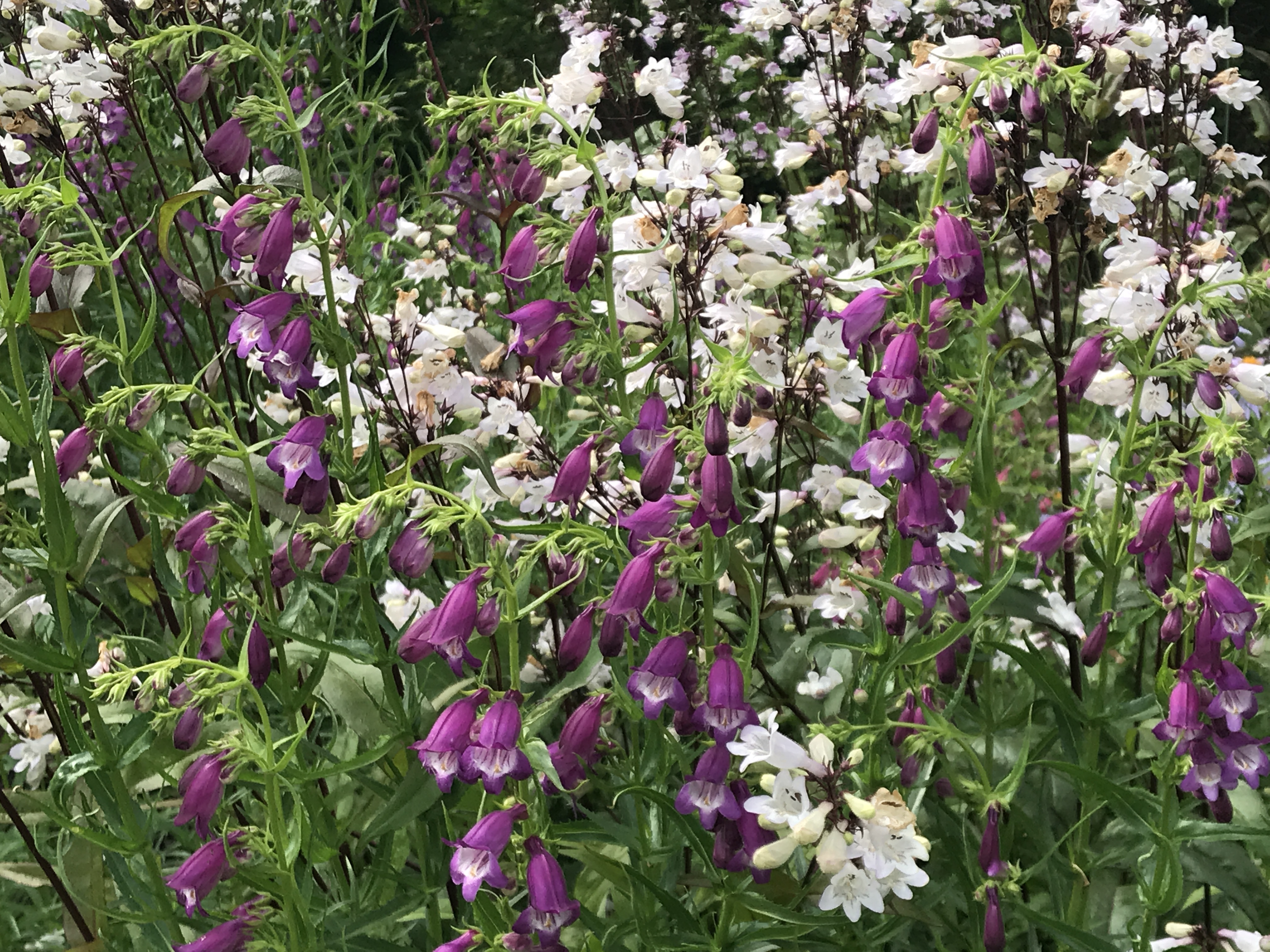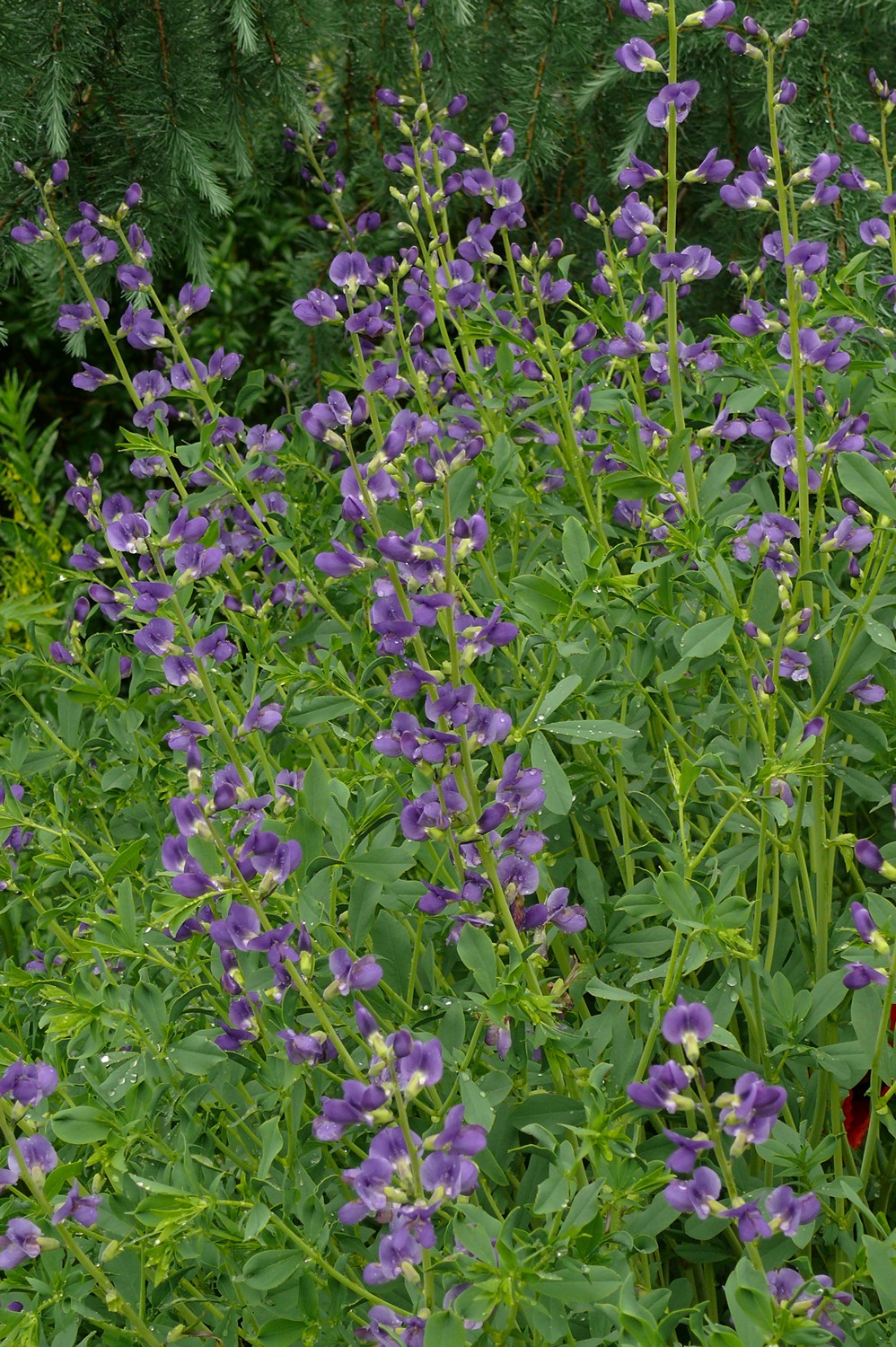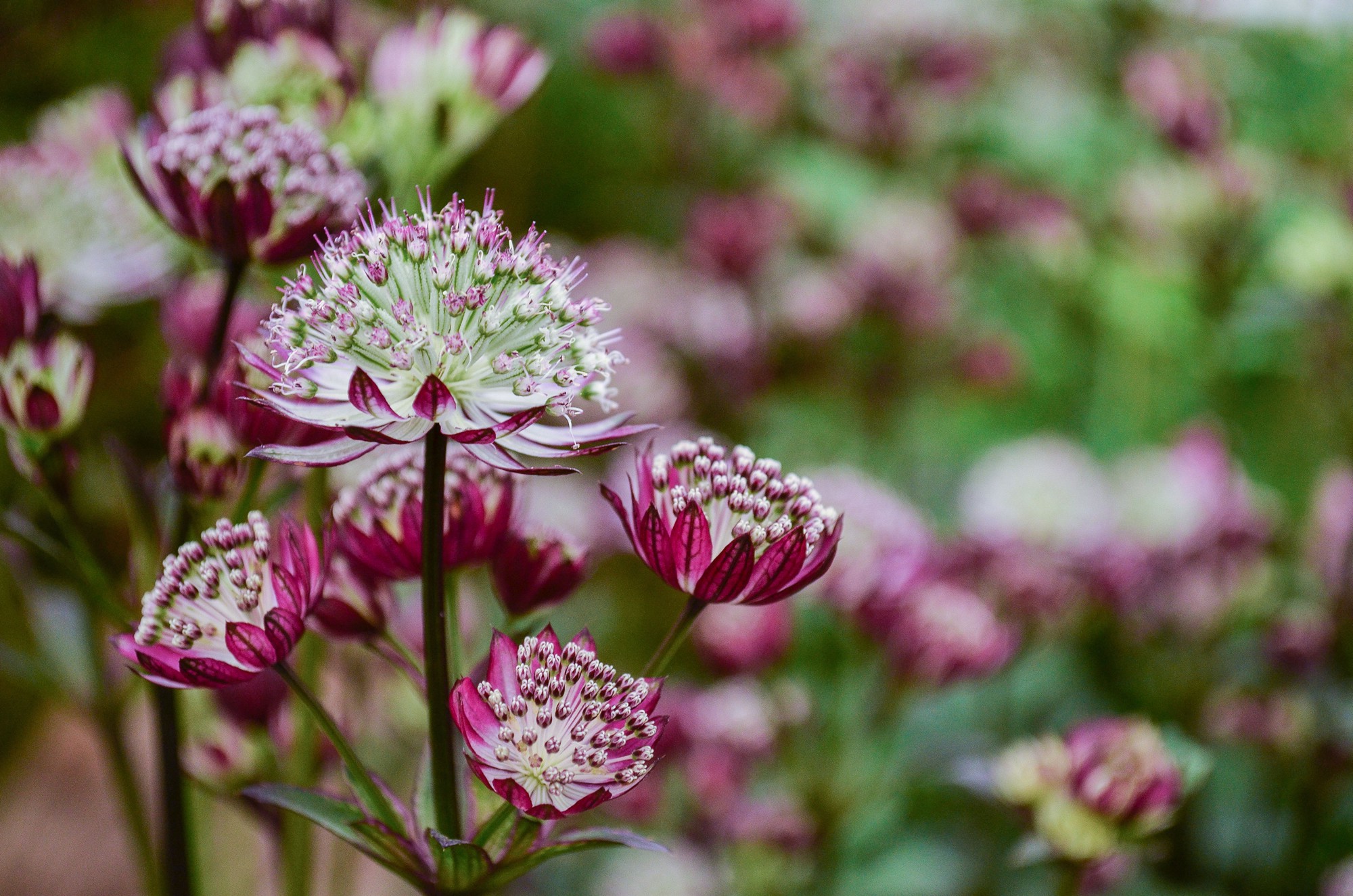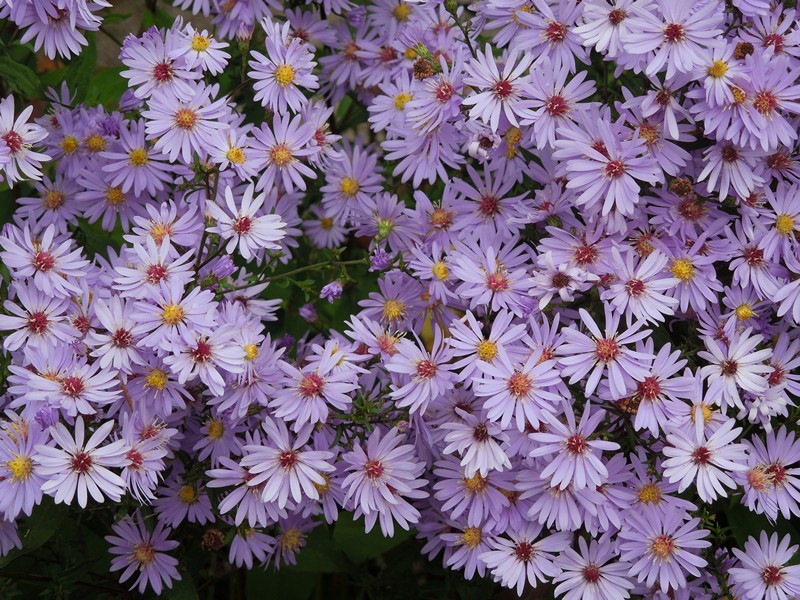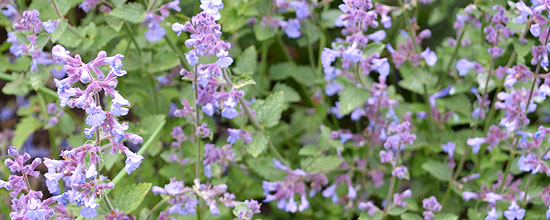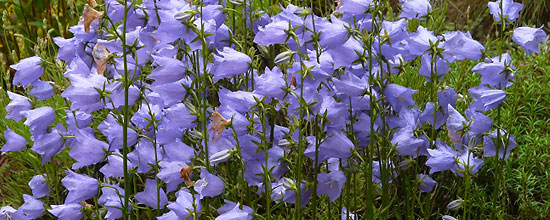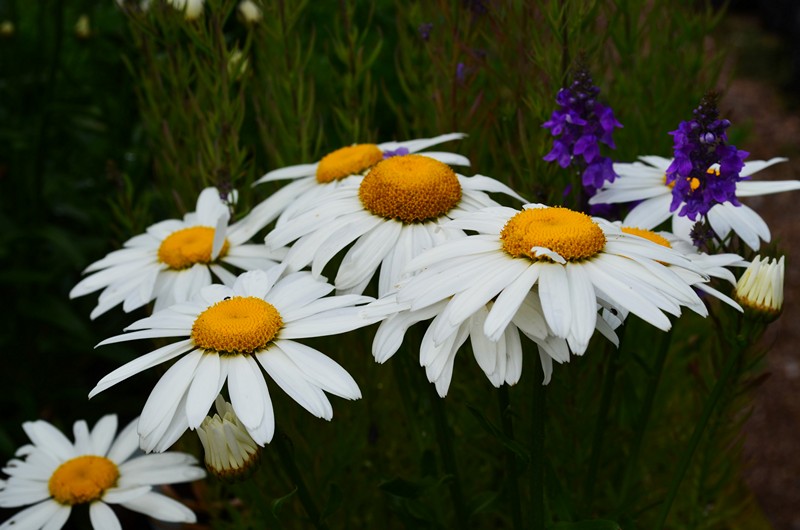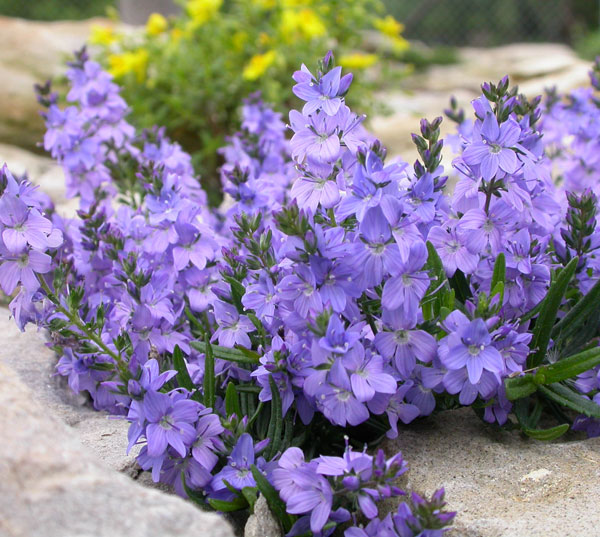The extensive family sage (Salvia) a horticultural uses many kinds. Undoubtedly the most important, however, is šalvěj hajní, cultivated in a wide range of varieties. Like many plants intensively prošlechtěných, and accompanies it with regard to the inclusion of certain inconsistencies. Undisputed is the only type of share S. nemorosa, to which they are sometimes incorporated varieties (here comes the Czech generic name). Today, the complex varieties of garden sage mostly botanists and gardeners conceived as a hybrid S. x gorgeous (S. nemorosa x S. villicaulis), in literature, especially English, We also meet with other synonymous S. x sylvestris.
The plants grow to a height 40 when 80 cm, erect stems are topped lichoklasem formed from densely superposed whorls pyskatých blossoms. Flowering period include the following sage to an earlier trvalkám, by varieties bloom in June-July. Some varieties of late summer when appropriate treatment is relatively abundant blooms again (mezi spolehivě remontující patří 'Ostfriesland', 'Rügen').
Originally it was known only blue and purple flowering varieties, Today they are also available in pink and white colored. From the purple varieties is still the most widely used older, ale velice spolehlivá 'Ostfriesland', velkokvětá raná 'Viola Klose', z novějších například 'Wesuwe', 'Tänzerin', or to 90 cm vysoká 'Caradonna'. Fialově kvete 'Amethyst', oblíbená odrůda 'Blauhügel' a pale blue-violet flowers, neobvykle světlounce fialová je 'Porzellan'. Z bílých se pěstuje zejména 'Schneehügel', známá také pod anglickým názvem 'Snow Hill' nebo také pod synonymem 'Adrian'. Růžové odrůdy zastupují například semenné 'Rosakönigin' nebo 'Rosenwein'. Zajímavé jsou plnokvěté 'Plumosa' a 'Schwellenburg', the latest in the range include stunted, only 20 when 30 cm vysoká odrůda 'Marcus' (It grows worse, and also has a lower propagation coefficient).
Varieties are propagated vegetatively mainly, especially apical cuttings, but also odtržky and dividing. The most appropriate term for taking cuttings is May, when most varieties have enough quality at the base of the cuttings, This is however dependent varietal. Later sage growing quite strongly, quickly extended internodes and is harder to get “compact” cuttings. A subscription cuttings is possible again in the second half of summer, when the sage after flowering and again seřezávají usually consists of sprouts at the base. Cuttings should be 3 when 4 Folic couples and should be long about 3 when 5 cm, suitable are also woody cuttings with bead. After removing the lower leaf pair and zakrácení remaining leaves are long drinking in the propagation substrate, preferably consisting of a mixture of peat and sand in the ratio 1:6, Perlite vyhovuje Cistá. Cuttings root over 10 when 20 days, hrnkují alone or two. During the late summer multiplication should young plants to overwinter in a cold frame or at least cover in winter. Partitioning is less abundant, for the needs of gardeners, however, sufficient. Older plants have strong roots and cutting intolerant, It is therefore younger plants, the best two-year. Ideal deadline is April, a well-grown women can also get 30 oddělků. Nowadays, the market also has several generative variety množitelných. Originally, it was their problem certain imbalance, variety of new generation, however, are sufficiently uniform (e.g. tmavě fialovomodrá 'Merleau' oceněná zlatou medailí Fleuroselectu a její růžový partner 'Merleau Rose'). Z dalších semenných odrůd lze jmenovat například modrofialovou 'Blaukönigin', růžové 'Rosakönigin' a 'Rosenwein' (But you must reckon with a certain inconsistency). We are sown in February and in April, at a uniform humidity and temperature 18 20 ° C. Seeds germinate sometimes unevenly, seeds germinate light, Therefore, a humid, only slightly pressed against the substrate.
Salvia nemorosa generally belong to the undemanding plants, It grows in almost any garden soil. The plant but grows best on well-permeable, not too nutritious soils (rich in nutrients supplied or abundantly irrigated areas can poléhat). They require full sun habitats, tolerate waterlogging. After flowering, it is advisable to remove faded flowers or even better plants trimmed to the ground. The treated very quickly grows, and most varieties of late summer blooms again richly (renovating).
Garden sage is applied as bedding perennials, They stand out in the foreground trees or in larger groups in open areas, They are nice in plantings with grasses. Well combined with other perennials, blue and purple varieties look best next to yellow, pink or white flowering plants, White sage varieties are more versatile. When designing the beds to be reckoned with, that this sage blooms quite early and midsummer after flowering is usually editing them, whereby the furrows formed blanks. It is preferable to plant it, rather, to the edges of flower beds, where vacancy is not so noticeable, or hide it appropriately selected perennials with late flowering period (Aster amellus, autumn hybrids Aster, Achillea, Coreopsis, grass) or even annuals (Zinnia, Tagetes and more).
The article was published on the website of the Association Czech perenářů courtesy magazine Zahrádkář.





